Welcome to Purple Pawn, covering games played around the world by billions of people every day.
It’s been a while since we first talked about the new LEGO board games (here and here (almost two years ago)). Since their US release they have made a BIG splash, landing at the top of several holiday suggestion lists and top sellers at various game stores.
So what are they?
18 games: 12 small, 5 medium, 1 big box. The lead designer is Cephas Howard, with consultation with luminaries no less than Reiner Knizia and Bernie DeKoven. You have to build the games before you can play them, but they store in the box without having to be taken apart. The games can, in some instances and in some ways, be customized; not just the decorative aspects, but sometimes the physical arrangement of the board (changing the game play). The rules encourage you to modify the game rules, as well.
Which is probably for the best, since most of the games look pretty bad.
Small
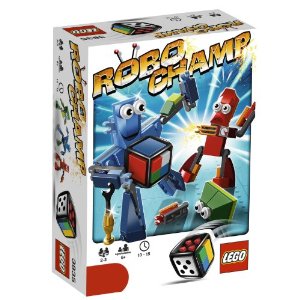
Robo Champ: Basically Cootie with LEGO pieces. Roll the die and take that part. Try to complete your robot first.
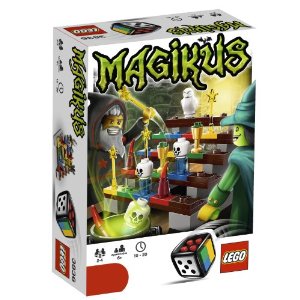
Magikus: Similar to Robo Champ, you roll the die and take the part. However, you first select which row or column to roll for. Try to complete your potion first.
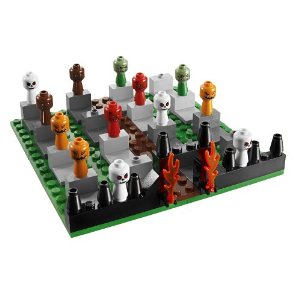
Monster 4: Roll the dice, place the colored piece, try to get four in a row. A spider might knock pieces off the board occasionally.
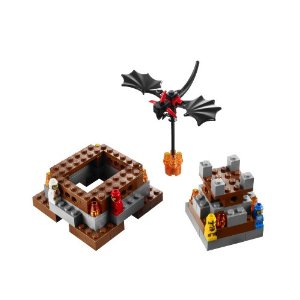
Lava Dragon: Roll the die, be the first to get to the top of the mountain. However, you move as many spaces as your color appears on the die roll, and this changes as the game progresses. While still nearly all luck, it’s at least an interesting addition.
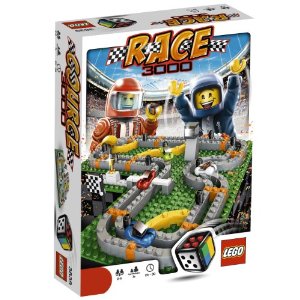
Race 3000: Roll and move, first to the finish wins. The die faces also adjust during the course of the game, but don’t make it a better game for that.
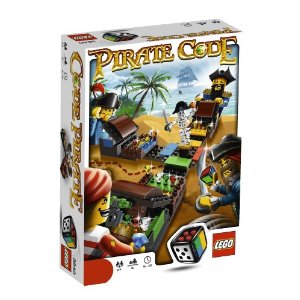
Pirate Code: Mastermind with a die.
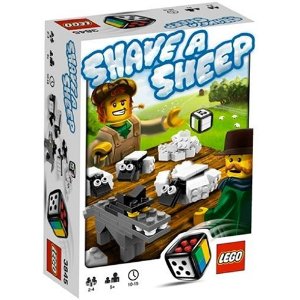
Shave a Sheep: Roll the die, and either take wool, score all your taken wool, or move the wolf to remove someone’s wool. A bit of push your luck.
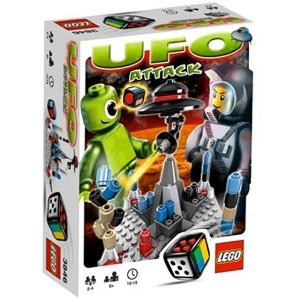
UFO Attack: Roll the die to complete your ship while you try to knock pieces off your opponent’s ship.
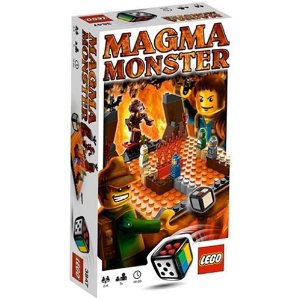
Magma Monster: Race game with a die, with two ways to interfere with your opponent’s progress.
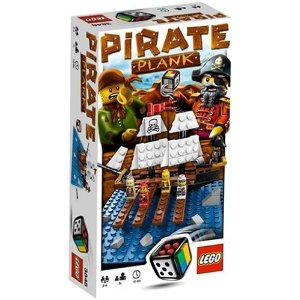
Pirate Plank: Roll the die to move your piece away from the end of the plank or your opponent’s piece closer. Be the last survivor.
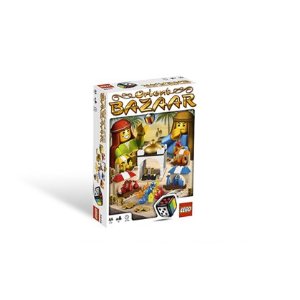
Orient Bazaar: I don’t know much about this one. Roll the die to collect items to sell at the bazaar. First to 15 gold coins wins.
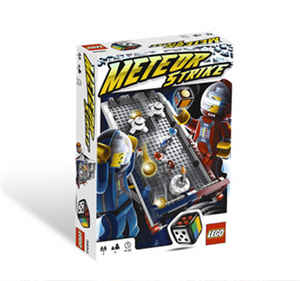
Meteor Strike: Roll the die to see if you can place a space station, blast one, or collect a meteor.
Medium
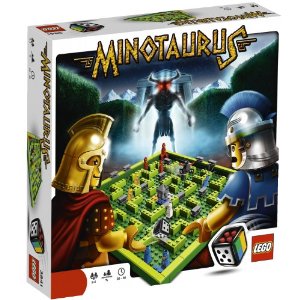
Minotaurus: Race to the center of the maze. Roll a die to see if you move yourself or a wall. Meeting the minotaur sends you back to the start.
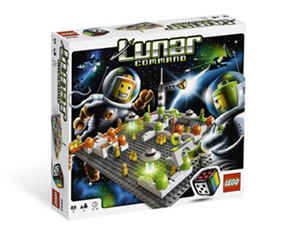
Lunar Command: A Knizia game, and you can tell. Roll the die, and either move pieces a total of four spaces, or move the UFO four spaces, or add pieces to your ship keeping in mind rules of placement. When a ship is formed, players gain points based on certain factors. The player with the most points wins.
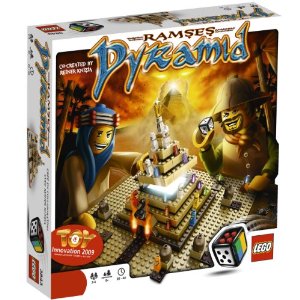
Ramses Pyramid: Another Knizia design. Move around the board collecting jewels or peeking at the hidden jewels. Then try to climb the pyramid by spending jewels, remembering the hidden jewels, or moving laterally. The die can also cause player interaction. First to the top of the pyramid wins.
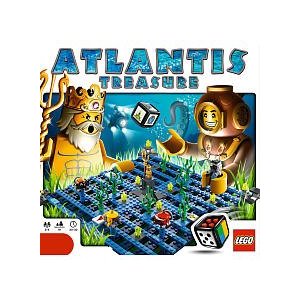
Atlantis Treasure: Roll the die to move and collect treasures, hinder your opponent’s movement, or shoot them to take their treasures. First to collect three treasures wins.
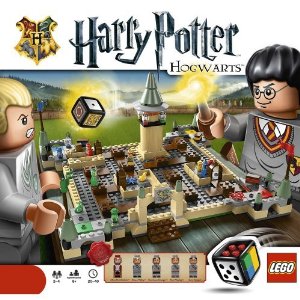
Hogwarts: Roll the dice collecting what you need to complete your homework. Moving staircases impede your progress.
Big Box
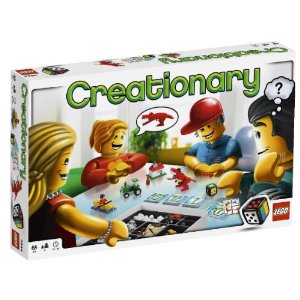
Creationary: Pictionary with LEGO bricks.
Impressed? The Knizia games look pretty cool, and some of the others might please younger kids (age 8- or so). Otherwise, the bits are pretty cool, but you have to decide if you get more value from the bits in the game versus buying a toy set.
5 Comments
Sorry, the comment form is closed at this time.
Trending
- Massdrop.com
- Oh the Irony—Illuminati Card Game Continues to Inspire Conspiracy Theorists
- Home
- Footprints, an Educational Ecology Game
- USPS Adds Board Game Flat Rate Box
- Baila, the Estonian Drinking Card Game
- Crystal Caste Wins Dice Patent Suit Against Hasbro
- Mirror Game, Red and Blue
- Are Board Games Dangerous?
- The Truth About Dominoes On Sunday in Alabama
Archives
Most Popular Articles
- Oh the Irony—Illuminati Card Game Continues to Inspire Conspiracy Theorists
- The 20 Most Valuable Vintage Board Games
- The Truth About Dominoes On Sunday in Alabama
- Sequence Game, and Variants
- USPS Adds Board Game Flat Rate Box
- Baila, the Estonian Drinking Card Game
- The 13 Most Popular Dice Games
- Are Board Games Dangerous?
- Guess Who? The Naked Version
- What Happened to the Jewel Royale Chess Set?
Recent Posts
- Toy Fair 2019—Breaking Games
- Talisman Kingdom Hearts Edition
- Toy Fair 2019—Winning Moves
- Toy Fair 2019—Games Workshop
- Toy Fair 2019—Star Wars Lightsaber Academy
- Toy Fair 2019—Stranger Things Games
- Toy Fair 2019—HABA
- Licensing Roundup
- Game Bandit
- 2018 A Difficult Year For Hasbro But Not For D&D Or MtG
Recent Comments
- on Toy Fair 2019—Winning Moves
- on Game Bandit
- on Second Look—Dungeons & Dragons Waterdeep Dragon Heist
- on Crowdfunding Highlights
- on Beyblade SlingShock
- on Game Bandit
- on Game Bandit
- on Watch This Game!, the Board Game Review Board Game
- on Second Look—Vampire: The Masquerade 5th Edition
- on Palladium Books Loses Robotech IP License, Cancels Five-Year-Overdue Robotech RPG Tactics Kickstarter





[…] This post was mentioned on Twitter by hartley, Purple Pawn. Purple Pawn said: The New LEGO Board Games: It’s been a while since we first talked about the new LEGO board games (here and here (a… http://bit.ly/9O8Q06 […]
My 2 indoor hobbies are Lego and board games with my kids, but all in all, I would rather keep these 2 hobbies seperate.
I really enjoyed Lego Creationary.
Full review:
http://www.annarbor.com/entertainment/lego-creationary-game-review/
Creationary is a lot of fun actually, though I wish they had put some more concrete rulesets together rather than just giving you options. Most of the others are as bland as you say though.
I’ve played several of the games:
Lava Dragon — played with my parents, who play mostly Backgammon, and my partner, who prefers Bohnanza. The game was fun, with just enough activity/decision-making to keep our interest. Our regular group lost interest quickly. The pieces were a little fiddly. Verdict: Better price performance ratio than a movie.
Ramses Pyramid — Played with more serious boardgamers. The rules were written badly and caused great confusion. We were so disappointed that we figured there must have been a problem, and once we got it, the game became playable. If Reiner Knizia’s name hadn’t been on it, we wouldn’t’ve bothered. The game itself is made of a neat idea of random movement and memory game. Our group doesn’t enjoy memory games. The board/setup is pretty fun, though.
Moster 4 — Best success! It’s a short, silly little game with a lot of quick changes. Good to play as a short breather between bigger/longer/heavier games, or to wind down after a long weekend. Most recommended.
The dice LEGO uses are especially fun — it’s worth grabbing a copy of one of their games just for the die that comes with it.
It looks like Mechaton (http://boardgamegeek.com/boardgame/25045/mechaton-giant-fighty-robots) might be a better LEGO game than LEGO’s made yet, but I do love their attitude.